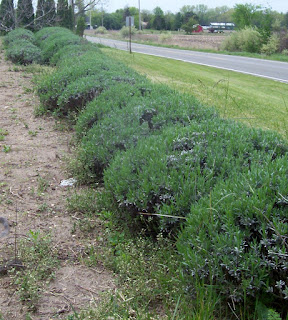This past week the Saginaw Valley Master Gardener Association held their annual plant exchange. This is one of the perks of being a member as you can bring along some of your plant divisions and exchange them for some plants you don't have and are anxious to try. I have many nice plants in my garden courtesy of the plant exchange. And hopefully some of my divisions have found good homes with other members. This year I took Angelica to the exchange. Angelica is a biennial, a plant that grows the first year, then flowers and sets seed the following year before dying. The seeds germinate and you have more new plants. It also has a stunning green flower, not something you see too often.
Irises of many varieties are easy to dig up and divide and pass along. I tend to wait until after they have flowered, then split them and ensure that no plant borers are hiding in the rhizomes before passing them along.
Columbine self seeds easily in my garden, plants that are easily dug up and then passed along. There are so many beautiful colors to be had with this plant and they are always misbehaving with each other, creating a more colorful garden.
Being a gardener means being generous and sharing your lovely plants with others. And in return, they share with you. Everyone wins!












